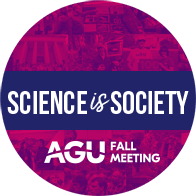Recruitment efforts have helped even out gender divides and increase the presence of people from minoritized groups in Earth, space, and ecological sciences (ESE), but hostile workplace conditions and the persistence of discriminatory, sexist, ableist, and racist behaviors continue to damage retention rates, a new survey has found.
“I don’t think that many academics and scientific fields acknowledge that retention is also an important factor in increasing diversity in STEM,” said Emily Diaz-Vallejo, a doctoral student in geography at the University of Wisconsin–Madison and lead author of a poster on the findings, which she will present on 14 December during AGU’s Fall Meeting 2021. “If this is not fixed, then diversity in the geosciences may still continue to be what it is.”
With 2,489 respondents from scientific memberships and organizations, the survey results showed that people in minoritized groups, including people of color, women, and people with disabilities, had more negative experiences. They also reported an increased desire to leave the field, feeling unsafe, and experiencing low productivity at work as a result of these experiences. Respondents were split among early-career (20%) and later-career (80%) professionals.
“There is this idea that if we get a lot of these minority groups in the recruitment processes, then if they accept to be in the field or in the academy, then we will have more representation,” Diaz-Vallejo said.
Yet survey results showed that recruitment alone isn’t enough.
Overall, 32% of nonbinary respondents and 22% of women reported receiving disrespectful and derogatory comments in ESE workplaces, and survey data showed a negative correlation between these harmful remarks and respectful workplace environments. Intimidation was reported most often by people with disabilities (12%), who were also the most likely to fear for their physical safety. People of color (7%) were more likely than other groups to experience sabotage or challenges to their expertise; these behaviors were associated with workplaces where workers felt their opinions were not considered or safe to share. On the whole, people who experienced bullying, sabotage, challenges to expertise, or derogatory remarks were 1.5–2.5 times more likely to consider leaving ESE fields than their peers.
The findings come from the ADVANCEGeo Partnership climate survey and represent one outcome of a 4-year partnership between the Association for Women Geoscientists, Earth Science Women’s Network, and AGU to address sexual harassment in ESE. The effort is funded by the National Science Foundation’s ADVANCE program and is tasked with developing bystander intervention workshops for academia.
A Long-Standing Problem
Diaz-Vallejo said that even within STEM, ESE fields have exceptionally low representation despite recruitment efforts. It’s a problem that’s hardly news to Ebony Omotola McGee, a professor of diversity and STEM (science, technology, engineering, and mathematics) education at Vanderbilt University and the author of Black, Brown, Bruised: How Racialized STEM Education Stifles Innovation. She said that the size of the survey and its specificity to the geosciences might be new but that hostile workplaces impacting diversity in STEM was a frustratingly familiar problem—and one that has been centuries in the making. Addressing it, McGee said, requires broader, systemic changes, like questioning the way STEM departments are set up.
“How is STEM functioning within that space? How was it created? Who are the creators?” she asked. “What part of that creation story is foundational to even somebody who walks into our current geoscience classrooms? Who are the faculty? How were they hired? Was there bias in their hiring?”
Still, why is the emphasis on recruitment, as Diaz-Vallejo describes, when hostile workplace environments are directly linked to attrition? McGee said it comes down to systemic bias and widespread structural problems.
“The people who are built in [STEM] are white, male, middle to upper middle class and have been socialized to think that they are somehow neutral, universal, objective, and there’s nothing political about what they do, it’s not racist,” McGee said. “And this ideology, the lack of interrogation of how race and racism may play a role or being minoritized may play a role within that culture is just simply not done. It’s not done despite the nice, glossy diversity statements.”
—Robin Donovan (@RobinKD), Science Writer


